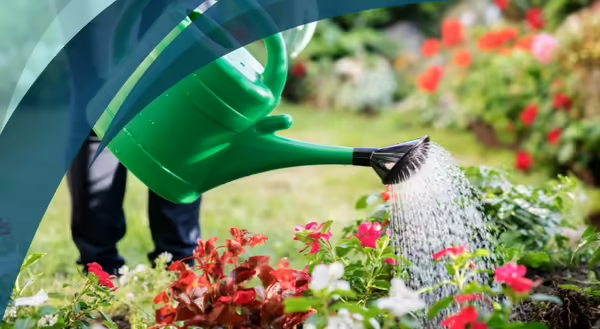
Summer is in full swing, even if we still have to break out the light jackets in the evenings. It’s so nice to see my flower beds really starting to hit their stride. The first coreopsis is peeking out with the promise of a spectacular show in a week or two. The coneflower heads are showing the beginnings of purple petals, yellow tomato flowers tease the bounty to come, and so many other hints of color are popping out. All our hard work last fall and this spring is finally starting to bear fruit (literally, in some cases!)
As the new Horticulture Educator for DuPage, Kane, and Kendall counties, I wanted to take a moment to introduce myself. I have replaced Richard Hentschel, who retired last year (not that anyone could truly replace Richard!) I look forward to providing you with lots of interesting gardening-related information in the coming years. I spent much of my career educating homeowners on using native plants in their home landscaping, so that’s a particularly favorite topic of mine. But I’ve been gardening since I was old enough to follow my grandfather and my dad around their gardens, stealing tomatoes and peapods to munch on while I played outside.
A little rain must fall (eventually?)
We are currently more than 2 inches below the average for this time of year, with little to no rain in the coming forecast. We’ve gotten so little precipitation over the last few weeks, coupled with a few weeks of warmer-than-usual temperatures, that plants are likely struggling. Even established native plants, trees, and shrubs, which can usually weather a drought like this, will appreciate a little help.
For best results, water everything early in the morning to keep water from evaporating too quickly. Evening watering is ok, but the cooler nighttime temps can encourage fungal growth and rot on wet plants. If you use a sprinkler, make sure it is targeting the plants and not watering your driveway or street. Using a properly aimed sprinkler can make it easier to give all your plants a nice long drink. Remember, it’s better to give your plants deeper waterings, less frequently, than daily short waterings, as this helps make sure the entire root gets water, not just the top inch.
To figure out how much water your plants are receiving, place a cup in the middle of the planting and measure the amount of water inside. A half-hour after watering, dig down with a trowel and see how far down the water went. If it doesn’t go down at least 8 inches, you may want to water for a longer period of time. Trees and shrubs can take several years to become fully established, so giving them a good soak will help them continue to thrive for years to come.
Here for you, come rain or come shine
Climatologists are predicting a few more weeks of this below-average rainfall, so continue to practice proper watering techniques until then. If you have gardening questions, contact the Master Gardener Help Desk at your county Extension office. They are available by phone or email, or you can stop into your local office, but check the website for help desk hours first. Happy gardening!